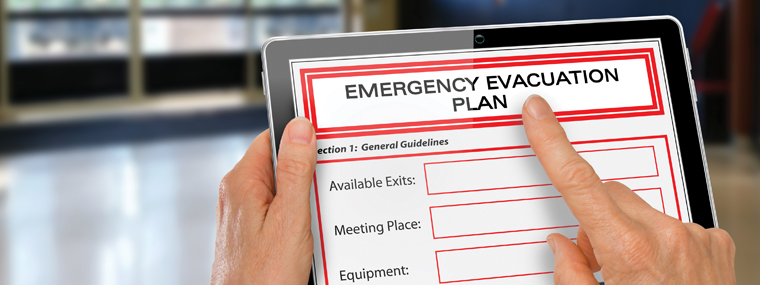
Planning for the Storm
Community Association Preparedness For Hurricane Season
By Rebecca Newman Casamayor / Published July 2018

Hurricane season is here once again, and that means it is time to consider whether we and our communities are fully prepared in the event a tropical storm or hurricane comes our way.
Hurricanes and tropical storms are nothing new for Floridians. But after escaping a major weather event for longer than ten years, Hurricane Irma certainly served as a wake-up call for Florida that hurricane preparedness is crucial and should never be left to the last minute.
This is especially true for community associations, which naturally work to coordinate storm preparation measures for the protection of the entire property, and in this process must confront many issues which single-family homeowners do not have to consider. For instance, condominiums and some homeowners associations are often comprised of multi-story and high-rise buildings covered in glass and balconies, which are known to create challenges regarding water intrusion. These are obviously exacerbated when those buildings are on the coast or in a flood zone. Further, associations have to deal with the fact that some owners do not live in their units year-round and may not have any measures in place for an approaching storm as it relates to that owner’s individual personal property, such as balcony furniture, planters, interior artwork, curtains, rugs, etc.
Given the particular issues that face associations in this situation, procedures should be in place well before hurricane season to ensure that the association and its residents are ready for a storm. If your association has not yet established storm guidelines and procedures, it is time for management and the board to review these issues and come up with a plan right away. If your association already has hurricane procedures in place, management and the board should still promptly review the plan and consider whether it should be updated or supplemented. In undertaking this review process, here are some areas and topics that management and the board should consider:
- Protection of Common Areas: What steps will be taken to prepare and protect the common areas, such as boarding up windows, obtaining sandbags, trimming trees, moving furniture, storing items or equipment, and securing records or any other valuable property?
- Instructions to Owners and Residents: Does the association have a notice letter ready to be sent to residents in advance of the storm with instructions for preparing their units, such as directions to close any hurricane shutters, remove all items from balconies, and set or shut off any appliances in case of a power outage?
- Emergency Contact and Access: Does the association have contact information for all owners and residents, as well as keys to all units and portions of the association property in case emergency access is needed (in particular, in the event of flooding and water intrusion)? In the event of an approaching storm, would it be feasible for the association to attempt to create a list of those residents who will remain at the property versus those who plan to leave?
- Insurance: Does the association have all the required insurance policies, and are they up-to-date and effective? If the policy period is expiring during hurricane season, is there a reminder in place for renewal in order to avoid a gap in coverage? Do owners and tenants have, or know they should have, their own insurance?
- Records of Property:Is there a procedure in place for management to document and back up all records, photos, videos, etc. reflecting the state of common element and association property prior to the storm, so that information can be later used in connection with potential insurance claims? Do all owners and tenants have, or know they should have, documented evidence of their own personal property and the conditions of that property pre-storm?
- On-site Staff:How many staff members (management, security, maintenance, etc.) will be on-site if and when the storm hits, if any? Where will they stay while on the premises during the storm, and will they have access to an emergency kit with supplies? Will any board members remain at the property to coordinate any repair and restoration efforts after the storm? If no board members or management personnel will be on-site during the storm, who will be designated to return first after the storm to assess damage?
- Generators: Does the association have one? Has it been checked prior to the storm on a regular basis? Is it filled with sufficient fuel, and how long will it be able to run continuously?
- Evacuation:Is the association in an area likely to be evacuated, and if so, does the association have a copy of any local evacuation procedures and resources? Does the association have its own evacuation procedures in place, such as ensuring all residents have left and the property has been secured?
- Clean-up/Restoration: Does the association maintain a list of vendors for storm clean-up, repair, and restoration (in particular, a water remediation company which can quickly respond to stop ongoing water intrusion, remove water, and dry wet areas, as well as a landscaping company which can safely remove debris from the property)?
- Communications with Residents: Who will be responsible for communicating with owners and residents to keep them apprised of storm preparations, monitoring, and restoration? How will that contact be maintained with owners and residents (email, phone, text, letter, etc.)?
- Submission of Insurance Claims: Who will be on-site to document storm damage during or after the storm in order to submit claims to insurance carriers?
An association’s storm plan should be as detailed and comprehensive as possible, taking into account that there is, of course, no way to prepare for every possible situation created by a major weather event—especially a hurricane or tropical storm, which can change direction at the last minute. The above is a non-exclusive list meant to be helpful in brainstorming what measures may be appropriate for your particular association. Most importantly, associations must make sure to tackle these issues early, rather than waiting until a severe storm is on the horizon.
Rebecca Newman Casamayor
Associate Attorney with Haber Slade
Rebecca Newman Casamayor is an associate attorney with Miami-based Haber Slade. Rebecca can be reached at rcasamayor@dhaberlaw.com. Haber Slade P.A. is located on the internet at www.haberslade.com and can be reached at (305) 379-2400.


